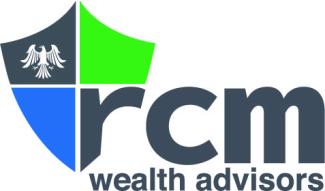
RCM Managed Asset Portfolio - Q2 2022
RCM Managed Asset Portfolio
By Christopher Chiu, CFA
Talk of Recession
Among the many things you may have read about the economy during the last few months is that a recession is looming. You might have read headlines like this one that I saw on June 29, 2022.
You can read the entire article here. But the evidence provided in the article is not completely helpful because, while it suggest there is going to be a recession, it doesn’t tell us when or how it is going to happen.
Overall, I think an economy doesn’t just fall into a recession when parts of the media first begins to notice signs and reports on them. Instead, I think there are several slowly developing steps that need to occur before a recession happens. The first is that conditions for weakening economic growth need to appear. The second is that these conditions must result in actual slowing economic growth. What we have found is that the conditions of slowing growth are still more prevalent than actual signs of slowing growth.
When you sort out the news in this way: sorting the conditions for slowing growth from actual slowing growth, it can help you make better sense of these negative news reports. They help us answer questions such as, When is this recession going to happen? How much time is left before a recession begins to occur? Are we in a recession right now?
For example, let’s look at some the conditions necessary for a weakening economy.
Labor
Continuing unemployment claims usually reach a very low level prior to a recession, implying that the economy has reached full capacity.
As seen above, continuing unemployment claims have reached the lowest levels since the 1970s (horizontal red line) when the population and workforce was much smaller. When the unemployment claims get to this level, they will eventually start to trend higher, which indicates a weakening economy. I would identify this picture as showing the conditions for the weakening of the economy.
And yet, signs of actual slowing growth in the labor market are still not present even in the current picture. While the labor market has almost peaked, it has not begun receding from this peak. When the economy is actually weakening, what you will see is the continuing unemployment claims beginning to trend higher. (See the prior periods of increasing unemployment that I have marked with sloping red lines to indicate slowing economic growth.) This is still not happening in the current situation. Currently, continuing unemployment claims are still going lower.
Similarly, job openings tend to top out and go into slight decline before the recession occurs, as seen below. Again, we are not in stage where growth can be determined to be slowing.
In the two previous economic cycles, we start seeing a decline in job openings at least a year before the recession. Generally, in these periods of flattening job growth, the equity and bond markets are experiencing one final boom because the Federal Reserve will have paused interest rate hikes in anticipation of slowing growth.
Industrial Production
There are other signs that that a recession is not imminent. The industrial production is a very reliable and straightforward indicator of a recession as it is beginning to happen. When the economy is expanding the industrial production index will progress higher; when its expansion is growing tired, it will always go sideways; and when the economy is shrinking and in recession, the industrial production index will always point downward.
As you will see from the above, the latest indication of industrial production (on the very far right) is still progressing higher. In previous recessions, the index is generally chopping sideways or trending downwards for about a year before the recession occurs, showing arrested growth. In other words, there are extended periods of non-expansion or non-growth lasting many months before a recession actually comes.
In Short
In short, we don’t think we are in a recession right now. There are still too many positives occurring in the economy. But we do think the conditions are growing that might lead us into a recession. What is happening in today’s asset markets is that equity and bond prices are dramatically front running recession possibilities, pricing the market as if the recession is already occurring. This has been driven first by very low market sentiment and secondly by very low consumer sentiment.
But it is not for certain that a recession is imminent or even that it is inevitable over the next twelve months. Sentiment which, in its negative form, has driven the recent discussion of recession has the possibility of becoming positive, simply by being less worse than people are expecting. And when we take a look around things aren’t nearly as bad as the market is assuming. Hopefully, what we will see in the coming months is people coming to realize that such negative sentiments may not have been warranted.

